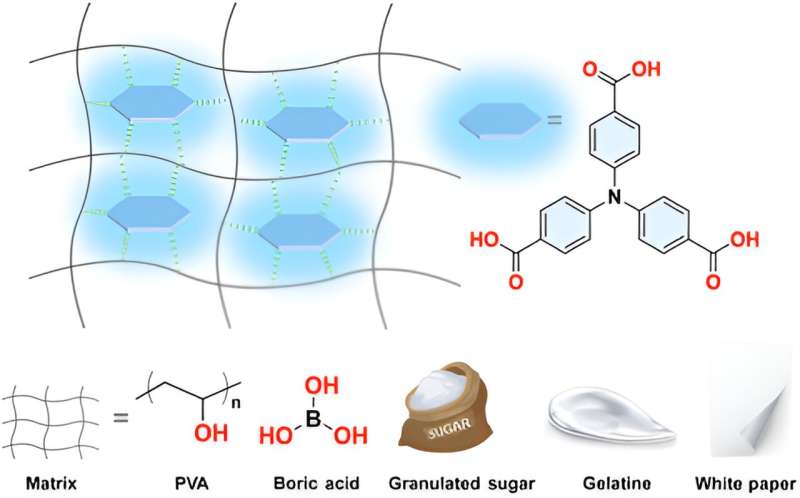New research from the University of St Andrews has uncovered how hydrogen bonds can enhance the phosphorescence efficiency and versatility of organic luminescent materials, potentially transforming fields such as imaging, anti-counterfeiting, and electronics.
The research, led by Dr. Sen Wu, Dr. Tao Wang and Professor Eli Zysman-Colman from the School of Chemistry at St Andrews, and published in CCS Chemistry, reveals a major advancement in understanding how hydrogen bonding can improve the performance and adaptability of organic room-temperature phosphorescence (RTP) materials.
By harnessing hydrogen bonds, these light-emitting materials, which glow after being exposed to light, could open new possibilities in areas such as imaging, data storage, and anti-counterfeiting technologies.
RTP occurs when materials emit light after being excited, creating a long-lasting luminescent effect. Although many RTP materials have been developed, achieving high-efficiency RTP has proven challenging due to complex underlying processes.
Hydrogen bonding, a key interaction between molecules, has been considered essential for optimizing these materials. However, previous studies have struggled to confirm its universal role.
The new study by the Zysman-Colman Group at St Andrews provides a comprehensive analysis of the role hydrogen bonding plays in activating RTP, by comparing its effects in different host materials. By doing so, the researchers have shown how these bonds can influence the brightness and stability of RTP, making it possible to fine-tune these properties for specific applications.
Commenting on the research, Professor Zysman-Colman said, “Through systematic structural and photophysical investigations, this work has elucidated the universal role hydrogen bonding has in triggering RTP by investigating the properties in a diverse range of hosts that either can hydrogen bond or not with the guest molecule.
“The findings open new possibilities for the practical use of RTP materials, including luminescent origami, anti-counterfeiting measures, and even light-based data writing techniques. This study not only deepens our understanding of how RTP works but also highlights new ways to control and optimize these fascinating materials for a range of cutting-edge applications.”
More information:
Sen Wu et al, Hydrogen-Bonded Supramolecular Network Triggers High-Efficiency Blue Room-Temperature Phosphorescence, CCS Chemistry (2024). DOI: 10.31635/ccschem.024.202404623
Provided by
University of St Andrews
Citation:
Hydrogen bonding discovery could transform the use of glowing properties in organic materials (2024, October 7)
retrieved 8 October 2024
from https://phys.org/news/2024-10-hydrogen-bonding-discovery-properties-materials.html
This document is subject to copyright. Apart from any fair dealing for the purpose of private study or research, no
part may be reproduced without the written permission. The content is provided for information purposes only.

